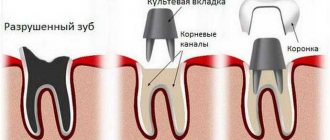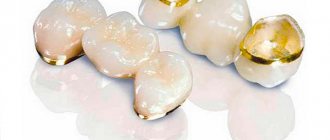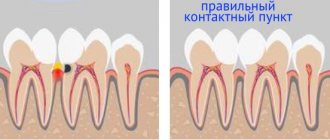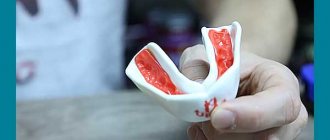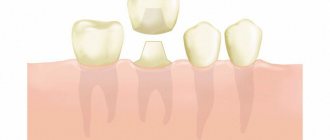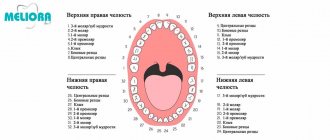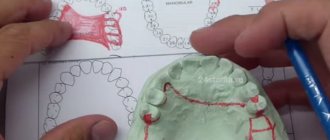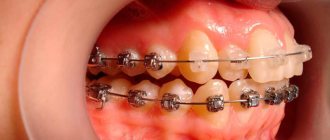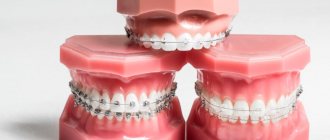A filling in dentistry is a material intended for filling a tooth cavity during the treatment of carious lesions.
In some cases, it is used to correct a defect after injury or other exposure. The material has some viscosity and hardens on its own, or gives the necessary hardness after special processing. Dental filling is used if it is necessary to treat a small surface. For example, in the treatment of caries, pulpitis, periodontitis. The seal is installed after cleaning and treatment with antiseptics.
Its service life directly depends on the selected raw materials. Therefore, it is important to know which filling materials are considered to be of the highest quality and are most often used in dental practice.
When the defect is particularly large, inlays are used for dental reconstruction, which cover large damage and perform various functions.
Types of fillings
Dental fillings are distinguished by the time of use and the quality of the material. Temporary fillings are installed for a short period; they close the tooth cavity until the next visit to the dentist. Permanent ones are installed for a long period (1-5 years). They are installed only on sanitized surfaces.
Purpose of permanent fillings:
- prevent harmful microorganisms from entering the deep layers of dentin;
- prevent the development of secondary caries;
- help recreate the shape of the tooth.
When using high-quality materials installed in compliance with the necessary standards, the filled tooth will not differ from other units in the dentition.
Life time
The service life of filling materials for temporary teeth has its own peculiarity. It lies in the fact that the filling needs to last only a limited time, until the “milk jug” is replaced by a permanent unit. Most filling materials satisfy this condition.
It is also necessary to take into account that the same material serves on temporary and permanent teeth for different times. On “milk jugs” that change in shape and size, fillings hold worse than on permanent ones that have a stable shape.
If a temporary tooth has 3-4 years left to serve, it is recommended to use compomers to fill it. Their strength is comparable to that of amalgams, and they can easily withstand the time required for changing.
If it is enough for the “milkman” to last 2-3 years, “pure” glass ionomer cements can be used. They are not as strong as compomers, but are inexpensive and easy to use.
In general, the service life of a filling is affected not only by the type of material used, but also by the depth and location of the carious cavity, the qualifications of the specialist, the quality of oral care, and the health characteristics of the child.
All these factors must be taken into account when choosing a material.
Let's talk about how to choose a good dentist for a child and an adult.
In this publication you will find the characteristics of Herculite filling material.
Find out here in which cases it is recommended to take a targeted photograph of the tooth.
Types of materials used for fillings
All filling materials must:
- be resistant to chemical attack - not subject to destruction from exposure to saliva, food, dentinal fluid;
- withstand significant mechanical loads;
- perform the functions of enamel and are not subject to rapid destruction;
- have a tight fit to the walls of the tooth;
- match the appearance of the tooth in such parameters as color, transparency and shape;
- prevent further development of caries;
- do not cause harm to health.
The following groups of materials are used for permanent fillings:
- Metal (amalgams) – contain various metals. Their main advantage is durability. Such a filling can last for several decades. Its disadvantages are visibility, the harmful effects of mercury included in the composition. Today, such fillings are used extremely rarely.
- Cements are used quite often. They have different compositions, on which their characteristics depend.
- Composites are the most popular materials in modern practice. They are divided into chemical and light curing composites. Light-curing material has the best qualities. Its advantages include high strength, ease of use, and excellent aesthetic properties. Therefore, it is used not only for filling, but also for restoring shape.
The best filling materials (as of 2021)
In the dental world, the greatest authority in the assessment of restorative materials currently belongs to the American publication The Dental Advisor. For the last 12 years (from 2010 to 2021), the highest award in the “universal composites” category has been awarded to the Japanese filling material Estelite Sigma Quick. Selection criteria: percentage of inorganic filler, amount of shrinkage, correspondence of shades to the natural color of the tooth, ease of use, radiopacity, polishability. A survey of dentists showed that they switch to Estelite more often than to other filling materials. Clinical success of Estelite is 99%.2
Among aesthetic composites in 2015, 2021, 2021, according to the same publication, the filling material from Germany, Venus Pearl, took the highest position. Its clinical effectiveness is 91%.3 In 2021, it received the title of “preferred product”. It can also be used for chewing teeth.
In 2021 and 2021, first place in the category of aesthetic composites was taken by the Harmonize material of the American manufacturer Kerr Restorative.4
Other good quality filling materials should also be mentioned. These include those who received awards in 2016-2019: Omnichroma, Brilliant EverGlow, Admira Fusion, Filtek Supreme Plus and Filtek Supreme Ultra.
Why is light filling considered the best?
Thanks to the advent of fillings made of light-curing composite, the quality of dental treatment has been raised to the highest level. A special material is used for them. It hardens only under the influence of a special lamp. The material has characteristics that allow a specialist to form the desired shape and adapt it to the required conditions.
The composite has earned excellent reviews in dentistry thanks to:
- long service life;
- aesthetic characteristics, which make it possible to carry out restoration even on the front teeth;
- health safety;
- the ability to choose a shade that will best match the natural color;
- virtually instant hardening.
Today, dentistry uses various composite compounds, which are produced in the USA, Japan, and Europe. One of the best is Enamel filling material, developed by Micerium SpA
But in case of severe destruction, tooth restoration will require more than just filling material. To strengthen the structure, it is necessary to use a pin.
Rating of filling materials:
| Filling material | Manufacturer | Rated by The Dental Advisor | Year of last assessment |
| Estelite Sigma Quick | Tokuyama Dental (Japan) | 99% | 2021 |
| Herculite Ultra | Kerr (USA) | 98% | 2016 |
| Tetric EvoCeram | Ivoclar Vivadent (Liechtenstein) | 97% | 2017 |
| Harmonize | Kerr (USA) | 96% | 2019 |
| Filtek Supreme Universal Restorative | 3M (USA) | 96% | 2019 |
| Filtek Supreme Plus | 3M (USA) | 96% | 2018 |
| Filtek Supreme Ultra | 3M (USA) | 96% | 2018 |
| Brilliant EverGlow | Coltene (Switzerland) | 96% | 2018 |
| Beautiful II LS | Shofu (Japan) | 96% | 2018 |
| Grandio SO | VOCO (Germany) | 96% | 2012 |
| Gradia | GC (Japan) | 96% | 2007 |
| Omnichroma | Tokuyama Dental (Japan) | 94% | 2020 |
| Beautiful II | Shofu (Japan) | 94% | 2009 |
| Admira Fusion | VOCO (Germany) | 93% | 2019 |
| Venus Pearl | Kulzer (Germany) | 91% | 2021 |
| Premise | Kerr (USA) | 91% | 2005 |
What is tooth extension on a pin?
A pin is a small rod whose purpose is to strengthen the entire structure. It is installed in the root canal.
Tooth extension onto a pin may be required if:
- chipped teeth and cracks;
- enamel damage;
- violation of the integrity of the tooth as a result of trauma;
- loss of part of the tooth surface as a result of caries.
The most commonly used pins are:
- anchor - made from high-strength materials, they allow you to restore even the most severe damage. An important condition for their installation is healthy root canals;
- fiberglass - hypoallergenic and safe. Their main advantages are that they are easy to install, not subject to discoloration and corrosion;
- titanium - used when it is necessary to restore large damage.
The design of the pin is selected depending on the degree of destruction, as well as in accordance with the wishes and financial capabilities of the patient.
Materials for filling and restoring teeth
Types of composites
Classified:
- according to the characteristics of hardening (chemical, light, double);
- physical condition (diluted powder, paste, liquid);
- concentration and size of particles filling the composition;
- degree of transparency;
- purpose of use (universal, for lateral (chewing), anterior (frontal) teeth).
Macrofilled, microfilled, mixed (hybrid), and nanocomposites are known.
Particles of macrofilled composites have a size of 1-100 microns, the filler occupies up to 87% of the weight of the material. The advantages are high strength, but they are characterized by roughness, low level of aesthetics, changeable color, and the possibility of secondary caries formation. They are used in adding tooth stumps for crowns and working with loaded cavities of classes I and II.
The size of the elements of microfilled composites is 0.007 - 0.4 microns. The weight of the filler is up to 79% of the total mass of the material with high aesthetics. Main disadvantages: fragility. It is used for the reconstruction of anterior teeth that do not experience significant load, and cosmetic operations for contouring the treated teeth.
The particles of hybrid type composites have a size of 0.04 - 4 microns, the filler occupies up to 87% of the weight of the material. Macrohybrids consist of elements measuring 0.04 - 3 microns. Solutions of this group are characterized by stable color, high strength, easy polishability, and aesthetic qualities. Designed for working with front teeth (group A), filling lateral teeth (group B). Microhybrids are suitable for creating fillings on all types of teeth and working with any cavities, that is, they are completely universal.
Nanocomposites differ in particle size from 20 to 75 nm. The weight of the filler is 78.5% of the total mass. The particles are produced through industrial synthesis rather than grinding. The advantages are durability, color stability, and external beauty. Used to make fillings on all teeth and in any cavities.
A material that combines the technology of producing glass ionomers and composites is a compomer. Consists of acrylic resin, strontium fluoride, strontium-fluorine-silicon glass, polyacrylic acid, stabilizers and polymerization initiators. It is characterized by excellent biocompatibility, good adhesion, but low strength and poor aesthetics. Due to their physical properties, they are mainly used when working with milk and non-stressed teeth, as well as as insulating spacers.
Where to go
You can make an appointment with a dentist in Ivanteevka at our Sanident clinic. We provide all types of dental care to patients from Shchelkovo and the urban district of Ivanteevka.
In case of significant damage in the oral cavity, our specialists:
- install pins of various types;
- restore the angle of the tooth;
- carry out complete anatomical restoration of the coronal part and other types of work.
High-quality filling and anesthetic materials are used for treatment.
A consultation with a dentist at the Sanident clinic is your first step to a healthy smile!
Requirements
The human dentofacial apparatus operates under extremely difficult conditions. To successfully perform their functions, sealing compounds must comply with a number of technological and operational conditions.
Primary requirements:
- Must be chemically inert, biocompatible with periodontal tissues and the oral mucosa. Have a pH close to 7.
- Do not dissolve in oral fluid, absorb minimal water from it.
- Have sufficient working time (the period from the end of mixing the components or other preparation of the filling composition until the completion of manipulations in the patient’s mouth).
- Possess high adhesive strength (adhesion) in a humid environment.
- Have thermal expansion close to the tooth tissues.
- Cure for a specific time as required.
- Maintain a color that closely imitates natural elements.
- Have low shrinkage to ensure good marginal seal of the filling.
- Have a hardness commensurate with the hardness of enamel.
- Be abrasion resistant.
- Do not show abrasive properties in relation to antagonist teeth.
- Possess anti-inflammatory and antiseptic properties.
Experts' opinions
Experts recommend compomers and condensable chemically cured glass ionomer cements as the main materials for filling temporary teeth. Compomers can be used on any surface, including chewing surfaces. They are applied in layers with each layer cured with light.
Some brands of compomers have colors that are attractive to children. These are the materials that experts prefer over others. They are produced under various brands and brands - Riva Light Cure, Fuji II LC, Ionolux, Photac-Fil.
Condensable glass ionomer cements contain no organic components and have a chemical cure that begins after mixing the powder and liquid. They are applied to prepared carious cavities at a time by rubbing (that’s why they are condensed).
They have lower strength than compomers. They are recommended for use on proximal and vestibulo-oral surfaces for relatively small lesions with the obligatory use of a bond.
The strength of GIC fillings can be increased by applying a protective varnish, but in this case, the release and penetration of fluoride into dentin is difficult . If there is a need to install a large GIC filling, it is advisable to cover it with a crown for strength.
The main brands of condensed GIC: Riva Self Cure, Ketac Molar, Ionofil Molar, Fuji IX, Chemfil Rock.
Reviews
Usually, when installing fillings, dentists do not inform the patient of all the technological details of the treatment. But, at the same time, no one is stopping parents from asking what material their baby will wear a filling from.
If you filled your child’s temporary teeth, please share information about what material was used for this, and whether the filling lasted until the temporary tooth was replaced with a permanent one? You can leave a review at the bottom of this page.
If you find an error, please select a piece of text and press Ctrl+Enter.
Seal tags
Did you like the article? stay tuned
No comments yet
